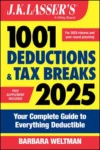IRS Expands Penalty Waiver for 2018 Estimated Tax
The IRS has responded to public pressure by expanding estimated tax relief for 2018.
We earlier reported that in recognition of the extensive changes brought by the Tax Cuts and Jobs Act, the IRS was waiving estimated tax penalties for taxpayers who paid at least 85% of their 2018 tax liability through withholding and estimated tax payments, down from the usual 90% threshold (IR-2019-03, 1/16/19).
Taxpayers and tax professionals complained that lowering the threshold to 85% did not go far enough, and in response, the IRS has lowered the threshold for 2018 to 80% (IR-2019-55, 3/22/19). Tax-preparation software will be revised to reflect the 80% threshold. The instructions to Form 2210 have also been changed; they include an “80% Exception Worksheet” that you can use to determine if you are eligible for the penalty waiver and if so, how to claim the waiver on Form 2210. Taxpayers who filed their 2018 return before the IRS announced the new relief and who would benefit from the 80% threshold can claim a refund by paper filing Form 843 (it cannot be filed electronically), and entering “80% Waiver of estimated tax penalty” on Line 7.
Provisional income
If your provisional income exceeds a base amount, part of your Social Security benefits may be subject to tax.



